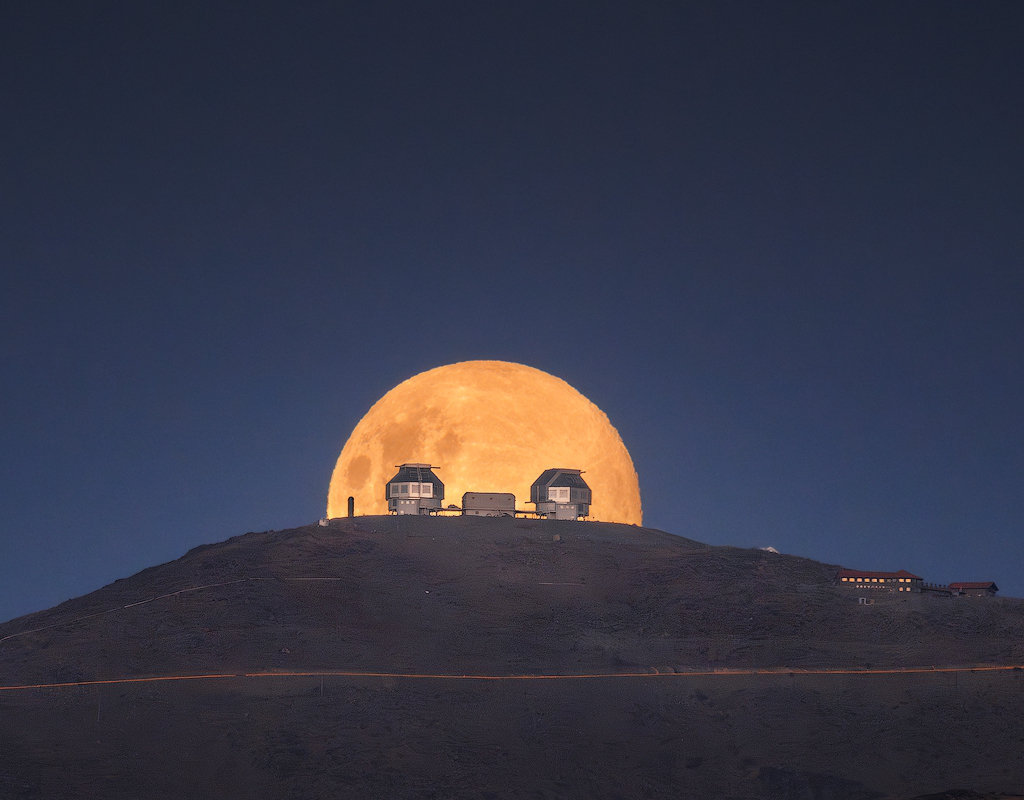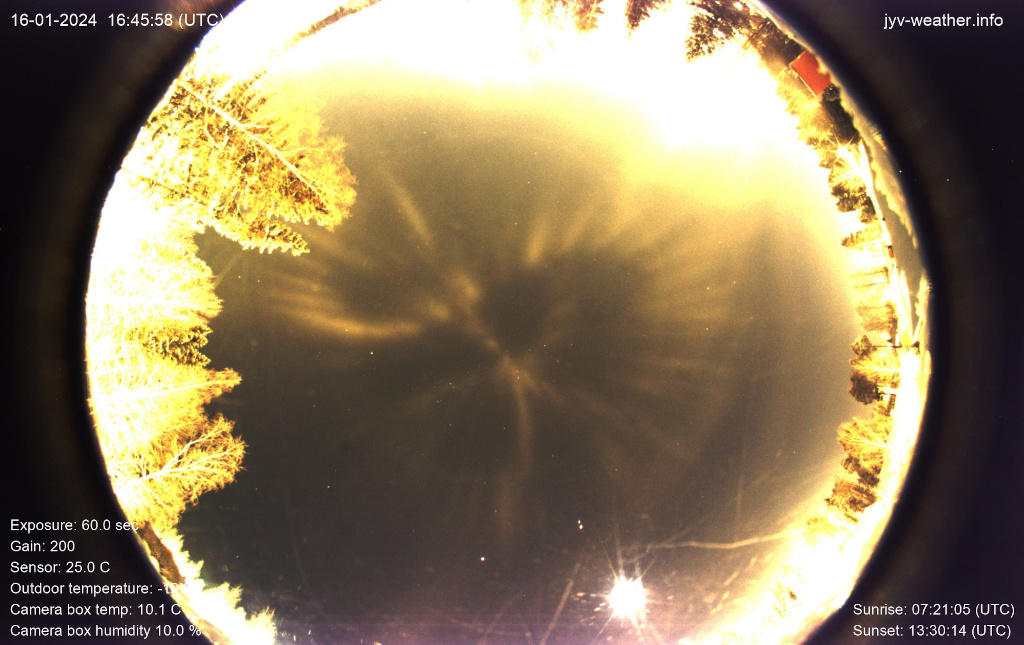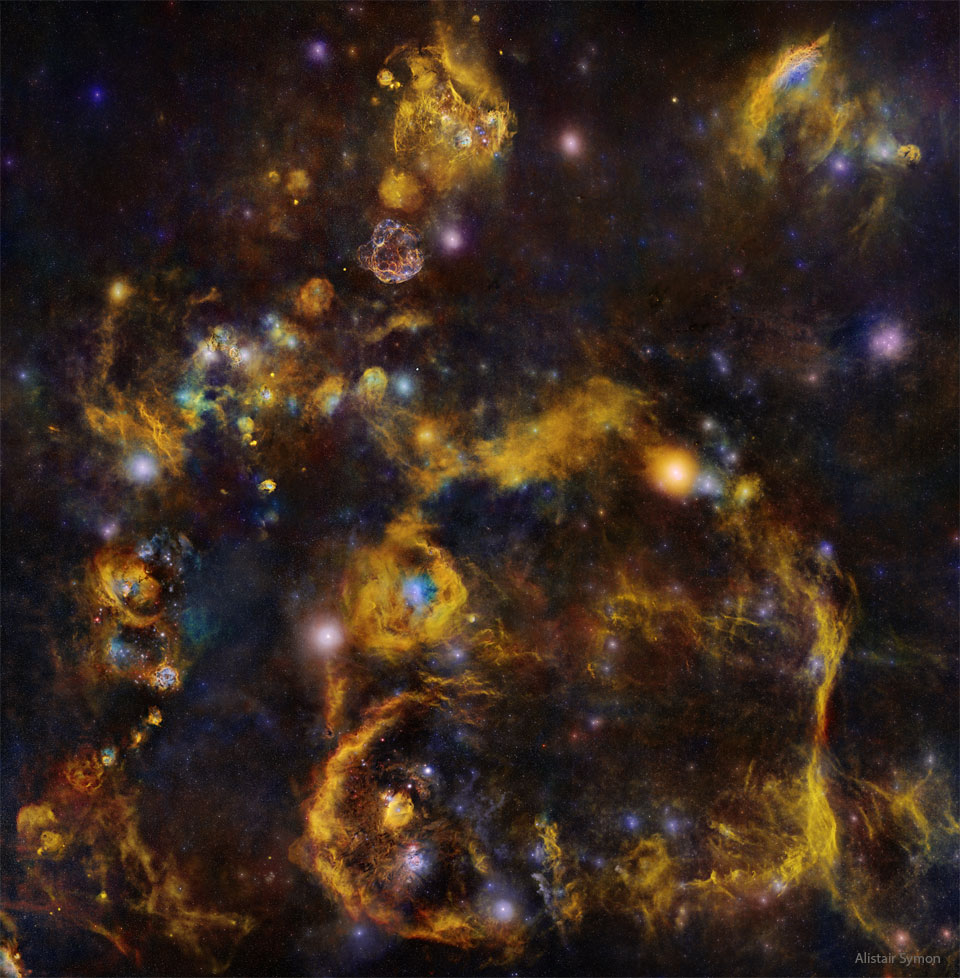
Nombre total de pages vues
27/01/2024
LE MERVEILLEUX JARDIN DES EPICES - Le curcuma, l'épice qui colore nos assiettes

ASTRONOMY - Full Observatory Moon
2024 January 27
Image Credit & Copyright: Yuri Beletsky (Carnegie Las Campanas Observatory, TWAN)
Explanation: A popular name for January's full moon in the northern hemisphere is the Full Wolf Moon. As the new year's first full moon, it rises over Las Campanas Observatory in this dramatic Earth-and-moonscape. Peering from the foreground like astronomical eyes are the observatory's twin 6.5 meter diameter Magellan telescopes. The snapshot was captured with telephoto lens across rugged terrain in the Chilean Atacama Desert, taken at a distance of about 9 miles from the observatory and about 240,000 miles from the lunar surface. Of course the first full moon of the lunar new year, known to some as the Full Snow Moon, will rise on February 24.
26/01/2024
ASTRONOMY - Epsilon Tauri: Star with Planet
2024 January 26
Image Credit & Copyright: Reg Pratt
Explanation: Epsilon Tauri lies 146 light-years away. A K-type red giant star, epsilon Tau is cooler than the Sun, but with about 13 times the solar radius it has nearly 100 times the solar luminosity. A member of the Hyades open star cluster the giant star is known by the proper name Ain, and along with brighter giant star Aldebaran, forms the eyes of Taurus the Bull. Surrounded by dusty, dark clouds in Taurus, epsilon Tau is also known to have a planet. Discovered by radial velocity measurements in 2006, Epsilon Tauri b is a gas giant planet larger than Jupiter with an orbital period of 1.6 years. And though the exoplanet can't be seen directly, on a dark night its parent star epsilon Tauri is easily visible to the unaided eye.
25/01/2024
O FUTURO NO PRESENTE - Sustentabilidade do Pal-V Liberty Pioneer Edition

LE JARDIN MERVEILLEUX DES EPICES - Le fenouil et ses vertus digestives

ASTRONOMY - Jyväskylä in the Sky
2024 January 25
Image Credit & Copyright: Harri Kiiskinen
Explanation: You might not immediately recognize this street map of a neighborhood in Jyväskylä, Finland, planet Earth. But that's probably because the map was projected into the night sky and captured with an allsky camera on January 16. The temperature recorded on that northern winter night was around minus 20 degrees Celsius. As ice crystals formed in the atmosphere overhead, street lights spilling illumination into the sky above produced visible light pillars, their ethereal appearance due to specular reflections from the fluttering crystals' flat surfaces. Of course, the projected light pillars trace a map of the brightly lit local streets, though reversed right to left in the upward looking camera's view. This light pillar street map was seen to hover for hours in the Jyväskylä night.
24/01/2024
ASTRONOMY - Earth and Moon from Beyond
2024 January 24
Image Credit: NASA, Artemis I; Processing: Andy Saunders
Explanation: What do the Earth and Moon look like from beyond the Moon? Although frequently photographed together, the familiar duo was captured with this unusual perspective in late 2022 by the robotic Orion spacecraft of NASA's Artemis I mission as it looped around Earth's most massive satellite and looked back toward its home world. Since our Earth is about four times the diameter of the Moon, the satellite’s seemingly large size was caused by the capsule being closer to the smaller body. Artemis II, the next launch in NASA’s Artemis series, is currently scheduled to take people around the Moon in 2025, while Artemis III is planned to return humans to lunar surface in late 2026. Last week, JAXA's robotic SLIM spacecraft, launched from Japan, landed on the Moon and released two hopping rovers.
23/01/2024
O FUTURO NO PRESENTE - Características do carro voador

LE JARDIN MERVEILLEUX DES EPICES - La coriandre, l’épice des pharaons

ASTRONOMY - Deep Nebulas: From Seagull to California
2024 January 23
Image Credit & Copyright: Alistair Symon
Explanation: How well do you know the night sky? OK, but how well can you identify famous sky objects in a very deep image? Either way, here is a test: see if you can find some well-known night-sky icons in a deep image filled with faint nebulosity. This image contains the Pleiades star cluster, Barnard's Loop, Horsehead Nebula, Orion Nebula, Rosette Nebula, Cone Nebula, Rigel, Jellyfish Nebula, Monkey Head Nebula, Flaming Star Nebula, Tadpole Nebula, Aldebaran, Simeis 147, Seagull Nebula and the California Nebula. To find their real locations, here is an annotated image version. The reason this task might be difficult is similar to the reason it is initially hard to identify familiar constellations in a very dark sky: the tapestry of our night sky has an extremely deep hidden complexity. The featured composite reveals some of this complexity in a mosaic of 28 images taken over 800 hours from dark skies over Arizona, USA.
SANTé/MEDECINE - Procédé révolutionnaire dans la lutte contre le cancer - 2/6 : Une découverte qui change tout
Jusqu’à présent, la lutte contre le cancer reposait principalement sur la chimiothérapie, la radiothérapie ou la chirurgie. Ces traitements,...

-
2022 September 26 All the Water on Planet Earth Illustration Credit: Jack Cook, Adam Nieman, Woods Hole Oceanographic Institution ; Data ...
-
La majorité des grêlons qui tombent sous les orages et les averses ne pèsent que quelques grammes. Mais il y a quelques années, c'est un...





